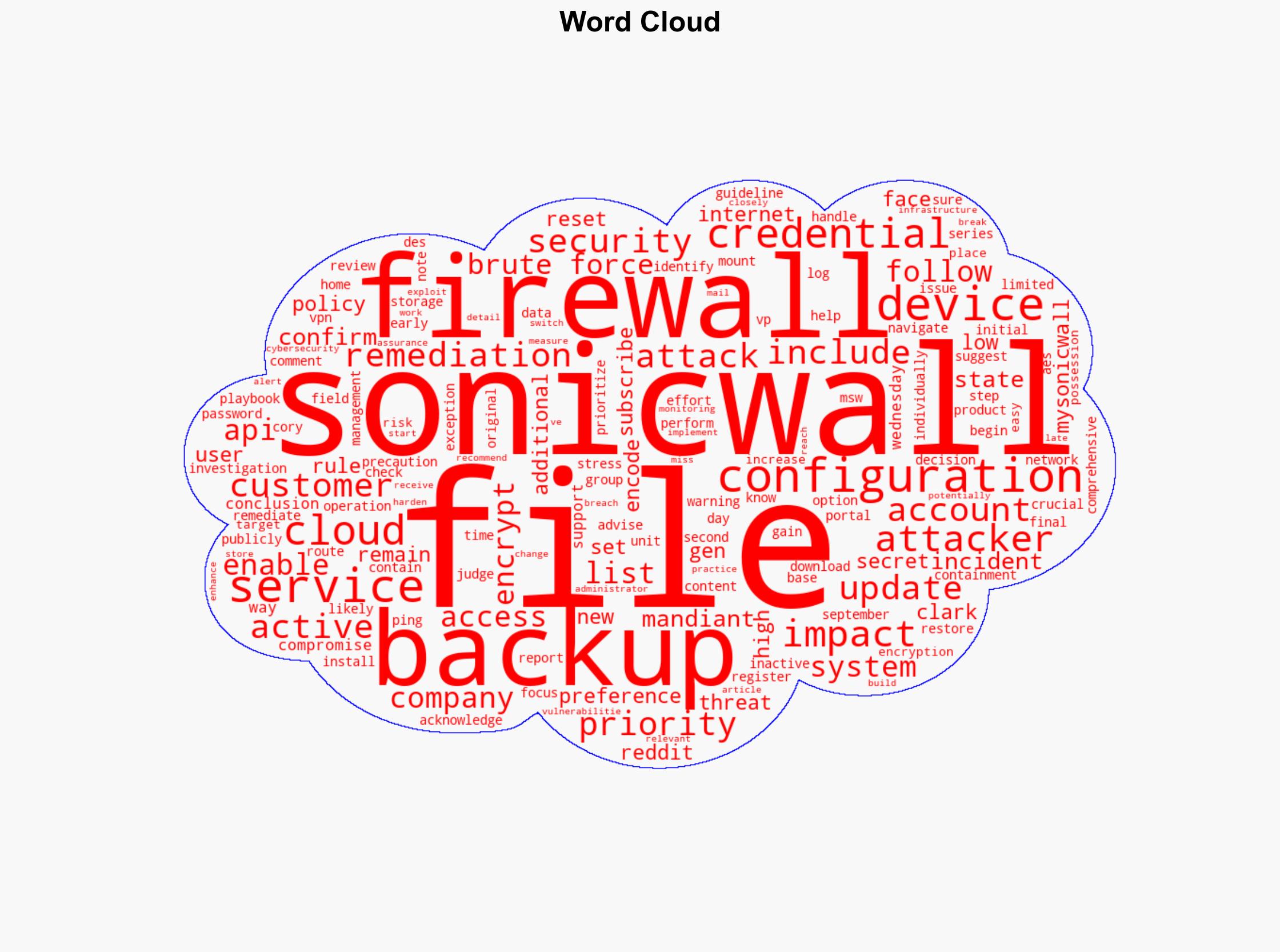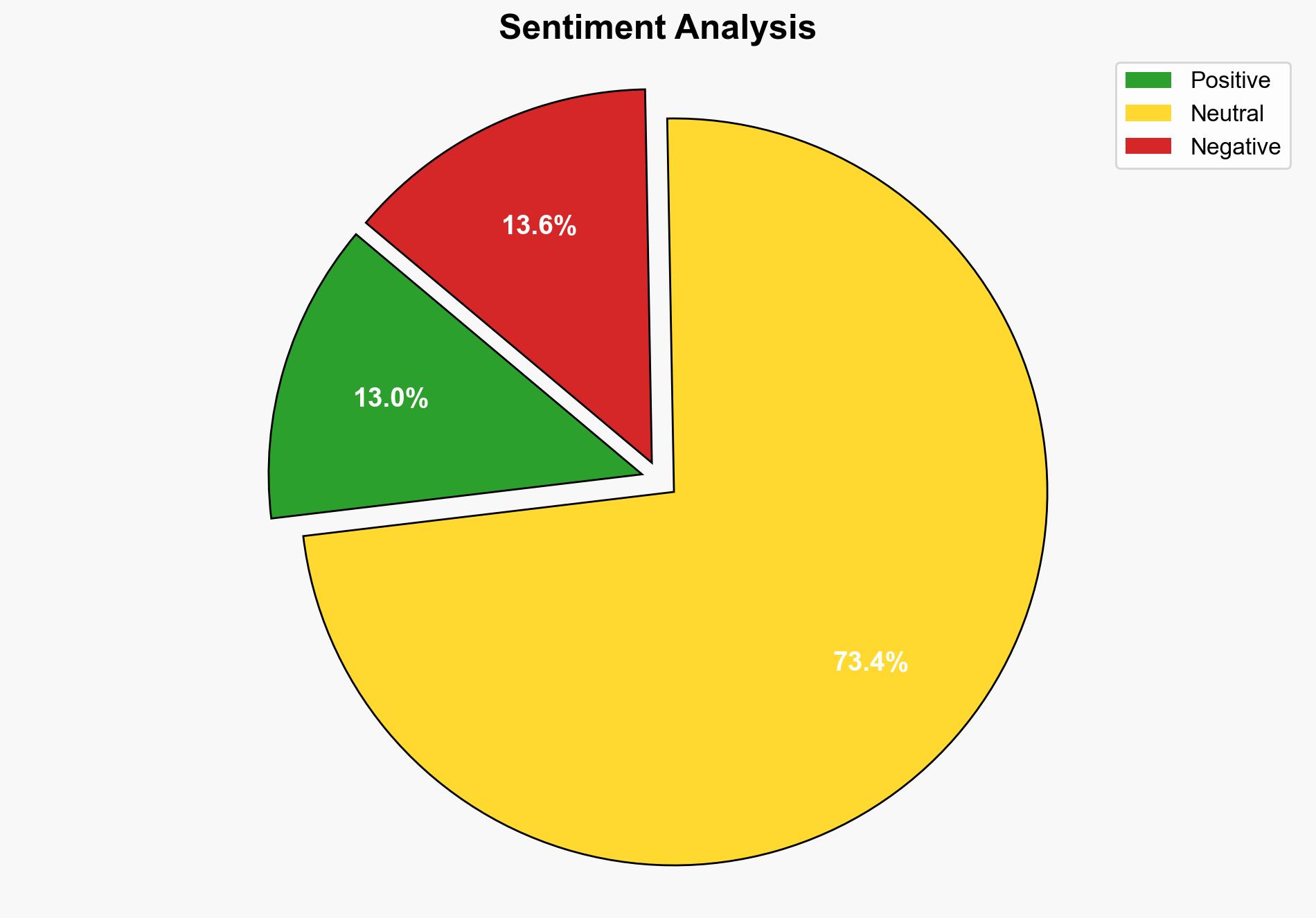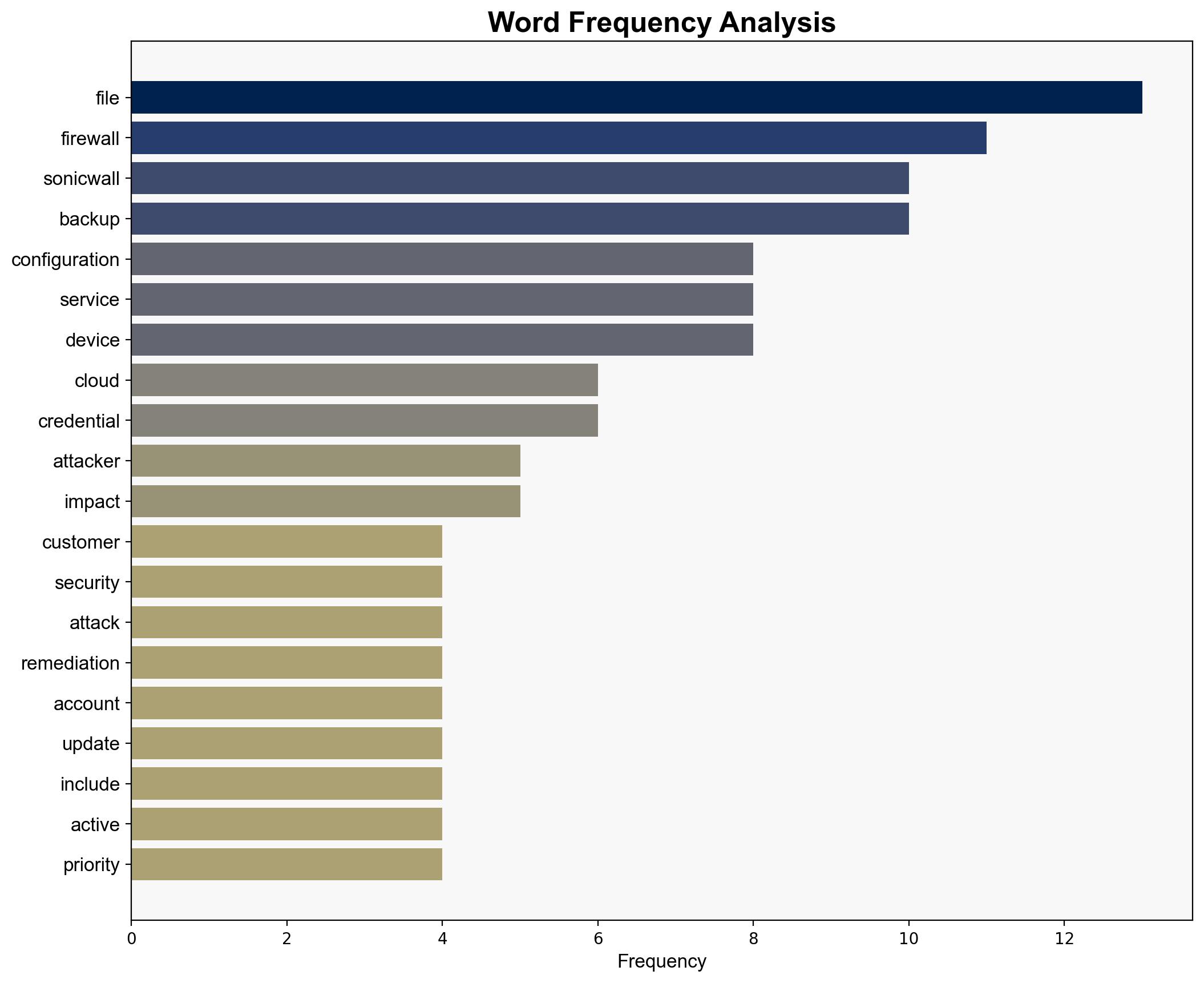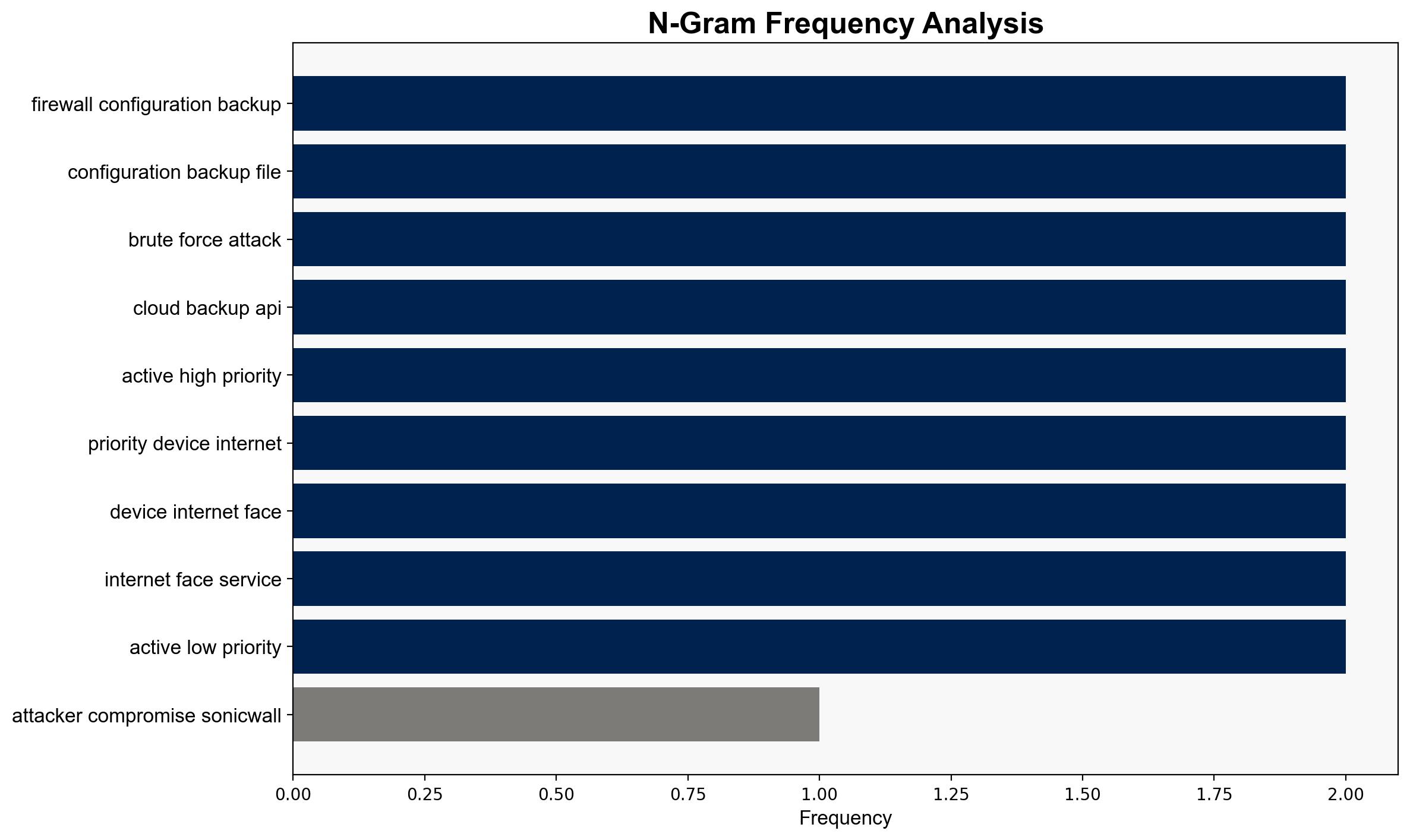Attackers compromised ALL SonicWall firewall configuration backup files – Help Net Security
Published on: 2025-10-09
Intelligence Report: Attackers compromised ALL SonicWall firewall configuration backup files – Help Net Security
1. BLUF (Bottom Line Up Front)
The most supported hypothesis is that the attackers exploited vulnerabilities in SonicWall’s cloud backup API through brute force attacks, leading to the compromise of firewall configuration backup files. This incident poses a significant cybersecurity threat, potentially impacting numerous organizations relying on SonicWall for network security. Confidence Level: Moderate. Recommended action includes immediate credential resets, enhanced monitoring, and a comprehensive review of cloud security protocols.
2. Competing Hypotheses
1. **Hypothesis A**: The attackers successfully executed a brute force attack on SonicWall’s cloud backup API, gaining unauthorized access to all firewall configuration backup files. This was facilitated by weak or insufficient security measures in place at the API level.
2. **Hypothesis B**: The compromise was due to an insider threat or a previously unknown vulnerability within SonicWall’s infrastructure, rather than a brute force attack, which allowed attackers to access the backup files.
Using the Analysis of Competing Hypotheses (ACH) 2.0, Hypothesis A is better supported due to the explicit mention of brute force attacks and the subsequent response measures focusing on credential resets and API security enhancements.
3. Key Assumptions and Red Flags
– **Assumptions**: It is assumed that the brute force attack was the primary method of compromise, and that SonicWall’s encryption measures were not bypassed.
– **Red Flags**: The lack of detailed information on how the brute force attack was executed and whether other vulnerabilities were exploited raises concerns.
– **Blind Spots**: The potential for insider involvement or undisclosed vulnerabilities is not fully explored, which could alter the understanding of the threat landscape.
4. Implications and Strategic Risks
The breach could lead to widespread exploitation of compromised firewall configurations, affecting network security across various sectors. This incident highlights the risk of relying on cloud-based backup systems without robust security measures. If not addressed, it could result in a loss of trust in SonicWall’s security solutions, impacting their market position and customer base. Geopolitically, such breaches could be leveraged by state-sponsored actors to undermine national security.
5. Recommendations and Outlook
- **Immediate Actions**: Implement mandatory credential resets for all affected users and enhance API security protocols.
- **Long-term Strategies**: Conduct a thorough security audit of cloud infrastructure and consider diversifying backup strategies to reduce reliance on a single system.
- **Scenario Projections**:
– **Best Case**: Rapid containment and remediation restore customer confidence and prevent further exploitation.
– **Worst Case**: Persistent vulnerabilities lead to repeated breaches, causing significant reputational and financial damage.
– **Most Likely**: Incremental improvements in security reduce immediate risks, but long-term trust recovery requires sustained effort.
6. Key Individuals and Entities
– Cory Clark, VP of Threat Operations at SonicWall, acknowledged the breach and outlined initial response measures.
7. Thematic Tags
national security threats, cybersecurity, counter-terrorism, regional focus





